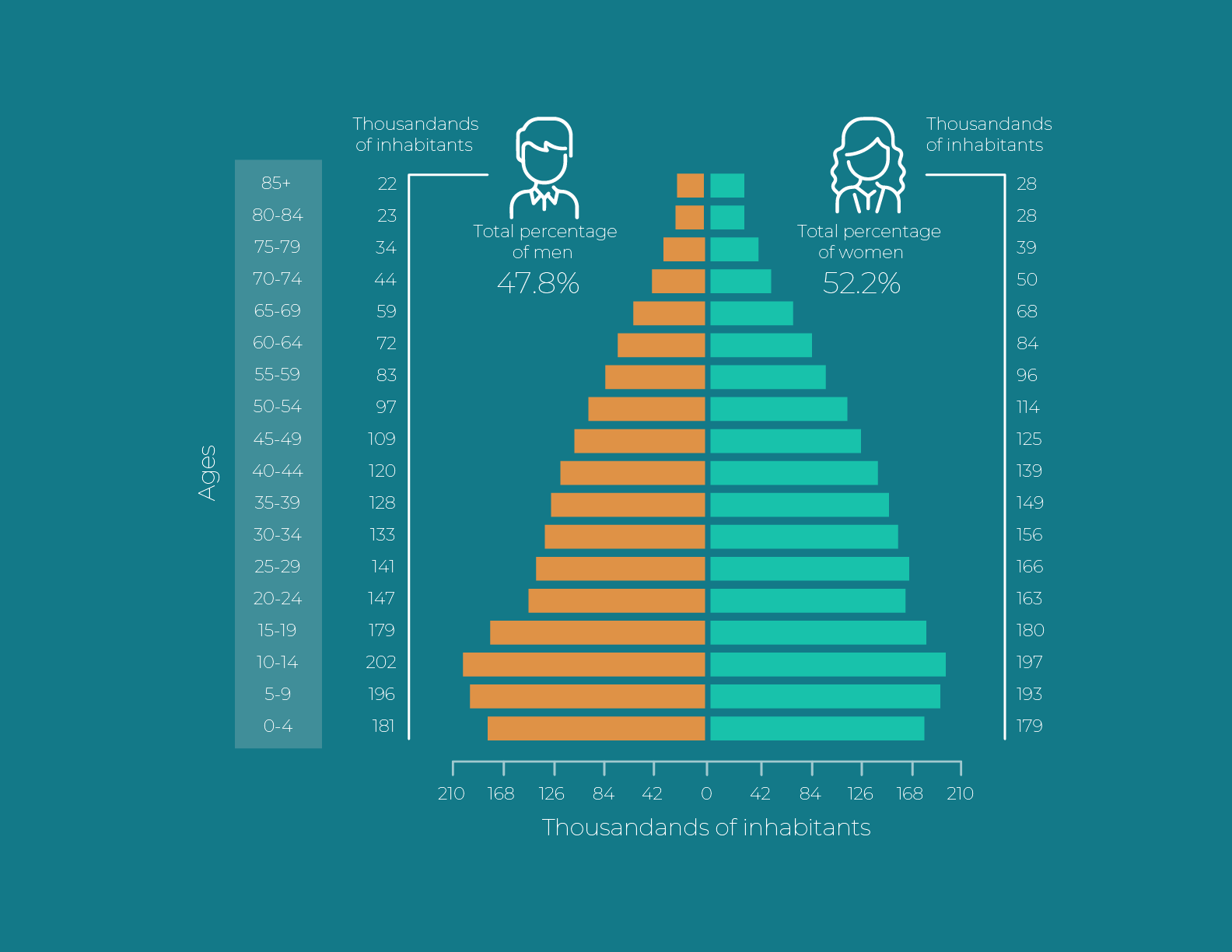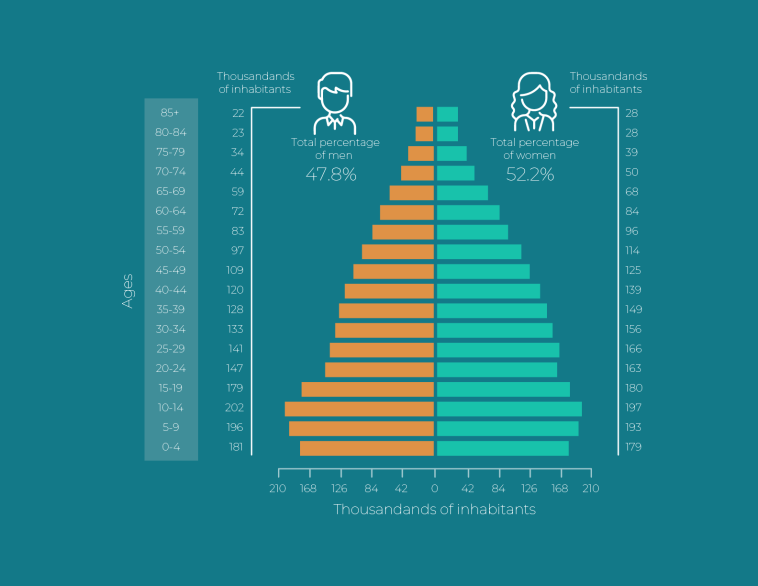
Oaxaca’s Bold New Step: An Investment Promotion Committee for Robust Growth
In a move that signals vibrant economic prospects for the state, Oaxaca has launched an Investment Promotion Committee aimed at repositioning itself as a key player in Mexico’s burgeoning industrial and manufacturing scenes. This initiative is not just a meeting of minds; it is a practical platform for fostering trust between public institutions, local businesses, and private investors. The state government, led by Governor Salomón Jara, has recognized that nurturing local supply chains and attracting strategic investments are essential if Oaxaca is to break through the tricky parts of economic stagnation and emerge as a prominent hub in Mexico.
In this opinion editorial, we will take a closer look at the drive behind this strategic commission, its potential impacts on sectors like steel, textiles, and pharmaceuticals, and how the committee plans to manage its relationship with federal initiatives like the Interoceanic Corridor of the Isthmus of Tehuantepec (CIIT), the national electromobility agenda, and the Well-Being Development Poles under President Claudia Sheinbaum’s Plan México. By exploring these themes, we will dig into how local leadership, entrepreneurial spirit, and a focus on the little details can fuel a wave of change in one of Mexico’s most culturally rich yet economically underexplored states.
Strengthening Local Supply Chains: A Key to Sustainable Economic Development
At the heart of Oaxaca’s initiative is the recognition that a robust local supply chain is critical to economic growth. The committee’s objectives include promoting import substitution and expanding the national content of locally manufactured goods. This focus is especially appealing to many regional businesses that face a series of tangled issues when competing on a national or international scale.
Local producers in Oaxaca now have a once-in-a-generation chance to recalibrate their operations. Integrating these businesses into larger federal projects like the CIIT means that local industries are more than just suppliers, but essential partners in a significant national strategy. The plan promises not only economic benefits but also the creation of jobs and an increase in territorial production that highlights local expertise and the state’s rich cultural identity.
Table: Benefits of Strengthening Local Supply Chains
| Benefit | Description |
|---|---|
| Job Creation | More jobs are created as local industries expand in response to growing demand from larger federal projects. |
| Economic Stability | With a strong local supply chain, the state can better manage economic fluctuations, ensuring steady revenue across sectors. |
| Increased Competitiveness | Local businesses gain a competitive edge by integrating into national projects, leading to improved technological practices and updated production methods. |
| Enhanced Market Visibility | Participation in federal initiatives boosts reputation and positioning in both domestic and international markets. |
By amplifying local supply chains, Oaxaca is effectively enabling local entrepreneurs to not only find their way into national projects but also take the wheel of their economic destiny. This strategy, if executed well, can serve as a blueprint for other regions grappling with the confusing bits of modern supply chain dynamics.
Aligning with Federal Development Goals: The CIIT and Electromobility Agenda
Oaxaca’s investment promotion efforts are not insular—they are closely aligned with broader federal objectives, making the state a pivotal part of Mexico’s overall growth strategy. The CIIT, a multi-billion-dollar project, has been a critical focus for both local and national leaders. In addition, the inclusion of the national electromobility agenda underlines the state’s commitment to cleaner and more efficient transportation solutions.
Andrea Solano from the Ministry of Economy has pointed out that these federal projects represent more than just opportunities; they are a chance for Oaxaca to demonstrate its viability as a modern industrial hub. Through consistent collaboration, stakeholders from various levels of government and the private sector are poised to turn these federal projects into locally relevant success stories.
Bullet List: Key Federal Projects Influencing Oaxaca’s Growth
- Interoceanic Corridor of the Isthmus of Tehuantepec (CIIT) – A strategic project aimed at connecting various key regions and boosting economic activity.
- National Electromobility Agenda – A forward-thinking approach to transform transport systems towards greener solutions.
- Well-Being Development Poles – Initiatives designed to ensure widespread social and economic benefits as mandated by Plan México.
This multi-faceted approach signifies how local government is sorting out the many twists and turns inherent in aligning regional growth with national development. The clever part of this strategy is that it exploits the strengths of local industries while simultaneously supporting federal goals, thus reducing intimidating barriers to growth.
Oaxaca’s Competitive Edge: Tradition Meets Innovation
The state’s recent achievement of ranking third in the country for Hecho en México certifications is a testament to the quality and authenticity of its products. These certifications not only endorse local craftsmanship, but they also bolster the reputation of Oaxaca’s artisanal industries on both national and international fronts.
Oaxaca is famed for its cultural vibrancy and rich traditions, which now blend with modern business practices to create an economic ecosystem that is both original and competitive. The infusion of tradition into new business ventures introduces a charming twist—one where the identity of local products is maintained even as they embrace state-of-the-art manufacturing techniques. This synergy between the old and new offers a unique competitive edge that may well define the future of regional business in Mexico.
Table: Impact of Hecho en México Certifications on Local Industries
| Impact Area | Description |
|---|---|
| Brand Value | Certifications elevate the brand image of products, symbolizing quality and authentic craftsmanship. |
| Market Expansion | Products with certification are more likely to gain traction in international markets where authenticity is prized. |
| Consumer Trust | Both domestic and foreign buyers are reassured by the rigorous standards that certification implies. |
| Economic Benefits | Boosts in market confidence can lead to higher revenue streams, which in turn benefit local communities and further stimulate production. |
The success of the Hecho en México certifications emphasizes that when local talents and authorities manage their way through a blend of tradition and modernity, they create win-win situations. These tokens of excellence are more than just awards; they represent the very identity of Oaxaca and its commitment to quality, a commitment that resonates strongly with today’s consumers who value both innovation and authenticity.
Creating an Ecosystem of Collaboration: A Vision for the Future
The Investment Promotion Committee’s structure reflects a mosaic of collaboration among federal, state, and municipal authorities, as well as local academics and private sector influencers. This mixed committee underscores the importance of working together across different levels of governance and expertise in order to find your way through tricky parts of implementing long-term economic policies. Meetings will be held regularly, and annual reports are slated to chart the committee’s progress through to 2030. This long timeline reflects a super important dedication to enduring change rather than quick fixes.
What stands out about this collaborative model is the transparent and inclusive approach to economic planning. By inviting contributions from various stakeholders, the committee is ensuring that the challenges of today—such as tangled issues around supply chain integrity and modern manufacturing processes—are met with solutions that benefit all parties. This level of openness is essential, as many small businesses and local innovators have for too long felt that they were left out of the bigger picture.
Bullet List: Key Stakeholders in the New Ecosystem
- State Government and Ministry of Economic Development (SEDECO) – Offering leadership and political support.
- Federal Authorities – Providing alignment with national projects and broader economic strategies.
- Local Entrepreneurs and Business Chambers – Delivering on-the-ground insights and innovative ideas.
- Academia and Research Organizations – Contributing analysis and long-term vision to guide policy-making.
- Private Sector Representatives – Ensuring that business realities are accurately reflected in strategic decisions.
By embracing this multi-pronged outreach strategy, Oaxaca is effectively laying the groundwork for an ecosystem where public and private interests converge. This kind of convergence is key to untangling the confusing bits of regional economic dynamics and transforming them into actionable strategies that are both scalable and sustainable.
Lessons for Regional Development: Building Trust and Economic Resilience
The new initiative in Oaxaca offers several critical lessons for regional development across Mexico and beyond. First, it demonstrates that building a resilient economic environment often starts with creating robust local supply chains and ensuring that local producers are well supported. These small yet critical building blocks, when managed with attention to fine points and subtle parts, can exponentially increase a region’s commercial appeal.
Secondly, the committee’s connection with federal projects like the CIIT and the national electromobility agenda highlights the importance of aligning regional initiatives with broader national goals. When local and federal visions intersect, they not only reinforce each other but also pave the way for economic models that are replicable in other regions facing similar overwhelming challenges. This alignment can serve as inspiration for many regional administrations to get into cooperative modes of operation that prioritize long-term benefits over short-term ease.
Finally, the recognition given to local craftsmanship through the Hecho en México certifications underscores a crucial truth: in a globalized economy, authenticity and tradition can work as powerful competitive tools. The Oaxacan model of bolstering economic growth without sacrificing cultural identity is a reminder that economic growth does not necessitate a departure from tradition. Instead, a balanced approach—one that leverages local strengths while embracing new technologies—can lead to a thriving economic landscape where respect for the past and vision for the future coexist harmoniously.
Bullet List: Strategic Recommendations for Other Regions
- Develop Inclusive Economic Strategies – Ensure all stakeholders are given a seat at the decision-making table.
- Capitalize on Local Strengths – Leverage cultural assets and traditional craftsmanship to build market differentiation.
- Align with National Success Plans – Sync regional projects with broader federal initiatives for a unified growth strategy.
- Induce Continuous Feedback – Create systems for regular evaluation and course correction to steer through unexpected challenges.
- Invest in Modernizing Traditional Sectors – Encourage local enterprises to adopt new technologies to remain competitive globally.
In essence, Oaxaca’s strategy of using a multifaceted and collaborative approach to economic development is a lesson in finding your path through the nerve-racking twists and turns that typically accompany ambitious regional reforms. It is a call to action for policymakers and entrepreneurs alike to recognize that building a thriving modern economy requires both innovation and respect for established traditions.
Addressing Local Challenges: Overcoming Confusing Bits and Tangled Issues
No economic transformation is free from challenges. Indeed, the path to aligning fragmented local production with national growth agendas is loaded with issues that can sometimes be intimidating. However, the new committee’s focus on creating a structured platform to continuously evaluate progress is a super important strategy. By holding regular meetings and scrutinizing annual reports, the government is taking active steps to sort out any pitfalls and manage its way through unexpected hurdles.
This proactive approach is essential when dealing with the tangled issues of modern manufacturing and supply chain integration. It means that instead of letting challenges become nerve-racking obstacles, the committee is ready to face each complicated piece head-on with adaptive strategies and responsive governance.
Table: Common Local Challenges and Proposed Solutions
| Challenge | Proposed Solution |
|---|---|
| Fragmented Supply Chains | Initiatives to consolidate local production networks and create centralized logistics hubs. |
| Limited Access to Technology | Partnerships with academic and private organizations to introduce modern technologies to local manufacturers. |
| Lack of Unified Strategy | Regular multi-stakeholder meetings to develop cohesive, integrated economic plans. |
| Balancing Tradition with Modernity | Programs that promote heritage while encouraging innovation through targeted grants and training initiatives. |
By addressing these common challenges with practical, actionable solutions, Oaxaca is not only finding its way through the confusing bits of local development but is also setting an example for other regions to follow. It is a testament to the fact that, with the right framework and collaborative spirit, even the most intimidating regional issues can be tackled in a systematic and sustainable way.
The Role of Public-Private Partnerships in Driving Economic Reforms
A critical pillar of Oaxaca’s strategy is the active involvement of public-private partnerships. This collaborative framework exemplifies how multiple sectors can work together to sort out issues that seem full of problems at initial glance. Public institutions bring in regulatory support and policy framework, while the private sector injects innovation, capital, and market insights into the process.
Such partnerships are key to providing the flexibility and resilience needed to manage economic growth effectively. They ensure that the benefits of investment promotion are distributed equitably throughout society—from large manufacturing hubs to small local artisans. Moreover, integrating perspectives from business chambers, universities, and international organizations reinforces the committee’s stance that multi-faceted collaboration is the cornerstone of a robust economic future.
Bullet List: Benefits of Strong Public-Private Partnerships
- Enhanced Resource Allocation – Combining public oversight with private innovation ensures resources are used in the most efficient way possible.
- Improved Regulatory Standards – Continuous interactions help create a regulatory environment that fosters growth without stifling creativity.
- Faster Adoption of Technology – Private enterprises can aid in the swift integration of modern technology into traditional production lines.
- Risk Sharing – Collaborative frameworks allow for shared accountability and lower financial risks for all parties involved.
- Broader Market Reach – Together, public and private stakeholders can penetrate new markets and create diversified revenue streams.
Oaxaca’s commitment to forging these types of partnerships is a forward-thinking strategy that many regions can learn from. By breaking away from siloed operations, these alliances help to manage your way through the nerve-racking challenges of rapid economic change, ensuring that growth is both diversified and inclusive.
The Future of Oaxaca: Building Confidence Through Transparency and Continuous Evaluation
As the Investment Promotion Committee sets its sights on an active life until 2030, one of its most critical tasks will be to maintain transparency and openness throughout its operations. Annual reports and regular updates are not just bureaucratic formalities; they are essential tools for reinforcing trust among stakeholders and ensuring that the initiative remains aligned with its initial goals.
This commitment to continuous evaluation will help the state quickly spot any deviations from its planned path and adjust strategies to better meet the evolving needs of both industry leaders and local communities. In an environment where policies need to adapt to fast-changing markets, this level of accountability is key to turning potential setbacks into opportunities for improvement.
Furthermore, transparency in this process makes it easier for investors to figure a path through the nervous anticipation that often accompanies large-scale projects. When every stakeholder is informed and involved, the speculative and overwhelming elements of economic development become far less intimidating. Instead, they transform into a collaborative journey marked by shared responsibilities and clearly defined milestones.
Bullet List: Key Steps to Ensure Transparency
- Public Release of Annual Reports – Ensuring that all data related to progress and challenges is available for public scrutiny.
- Regular Stakeholder Meetings – Frequent sessions to discuss progress, outline upcoming projects, and address concerns.
- Digital Platforms for Real-Time Updates – Harnessing technology to provide continuous updates and facilitate direct communication.
- Feedback Mechanisms – Establishing channels through which stakeholders can contribute suggestions and highlight issues.
- Independent Auditing – Engaging third-party auditors to evaluate the committee’s performance and adherence to its goals.
By setting up these mechanisms, Oaxaca is not only advocating for an inclusive approach to its economic strategy but is also paving the way for other regions to adopt similar best practices. In doing so, the state is crafting an environment where both progress and accountability coexist, thereby reinforcing investor confidence and the overall success of the initiative.
A Broader Perspective: The Impact on Mexico’s National Economic Landscape
Oaxaca’s initiative to boost local production and integrate regional development with national projects is more than merely a localized effort—it is indicative of a larger shift that could redefine Mexico’s economic landscape. As the country seeks to diversify its industrial base and improve competitiveness in global markets, strategies such as these demonstrate how blending tradition with innovation can yield impressive results.
The focus on essential sectors like steel, textiles, and pharmaceuticals highlights key areas where Mexico can stand out on the global stage. These industries, when strengthened at their foundation through local supply chain improvements and public-private partnerships, become authentic representations of national strength. Such projects not only support domestic economic growth but also send a clear signal to international investors looking for stable, innovative markets.
Table: Broader Impacts of Oaxaca’s Investment Promotion Strategy
| Area of Impact | Potential Outcome |
|---|---|
| National Competitiveness | Enhanced export potential from robust local industries can increase global market share for Mexican products. |
| Investment Inflows | Successful regional initiatives attract more strategic investments, bolstering overall economic resilience. |
| Innovation and Modernization | Collaboration and modernization drive technological upgrades that benefit both local and national industries. |
| Cultural and Economic Identity | A strong focus on heritage, as seen with initiatives like Hecho en México, reinforces the unique cultural value of Mexican products. |
On a national level, the ripple effects of Oaxaca’s investment promotion can be profound. The melding of local strengths with federal projects not only fosters an environment of sustainable economic growth but also sets the stage for a more innovative and competitive industrial base. This could very well translate to more balanced regional development across Mexico, ultimately leading to enhanced prosperity for the country as a whole.
Opinion: A New Chapter of Confidence and Strategy for Regional Economies
From an observer’s perspective, the bold initiative taken by the state of Oaxaca is emblematic of a new era for regional economies. Instead of viewing local challenges as insurmountable hindrances, Oaxaca’s approach demonstrates that the key to realizing a thriving business environment lies in working through issues with a strategic, inclusive, and transparent methodology. The committee’s governing model—marked by regular updates, comprehensive stakeholder engagement, and visible alignment with national projects—should serve as a beacon for other areas struggling with off-putting aspects of modern economic reforms.
The integration of traditional industries with modern technologies and strategic national collaborations is not without its complications. However, it is precisely in overcoming these nerve-racking twists and turns that the true resilience of a region is tested. By stepping up to the plate and offering pragmatic solutions to tangled issues, Oaxaca is crafting a blueprint that can be adapted in other regions facing similar economic challenges.
This model of progress relies on the delicate balance between preserving cultural identity and innovating to meet future demands. In today’s dynamic economic landscape, such a dual focus is essential if regions are to compete on both national and international fronts.
Bullet List: Final Thoughts on the State’s Strategy
- Embrace Collaboration – Bring together policymakers, entrepreneurs, and academics to create inclusive growth strategies.
- Leverage Local Strengths – Utilize traditional aesthetics and craftsmanship as unique selling points in modern markets.
- Align with Broader Goals – Ensure that regional plans dovetail with national projects for cohesive development.
- Maintain Transparency – Keep all stakeholders informed through regular updates and public reports.
- Adapt and Innovate – Be prepared to tackle every nerve-racking twist and turn with flexible, responsive strategies.
In reflecting on Oaxaca’s ambitious initiative, it becomes evident that this is more than just a policy shift—it symbolizes a renewed confidence in local capabilities paired with strategic foresight. The Investment Promotion Committee is a living example of how judicious investments in local industries can create a self-sustaining ecosystem, where the benefits of economic growth are shared by all who participate in it.
Far from being an isolated venture, this initiative is part of a broader narrative aimed at strengthening Mexico’s position as a competitive player in the global market. Through tactical investments in key sectors like steel, textiles, and pharmaceuticals, and by granting local producers the essential support they need to innovate, Oaxaca is not only catching up with modern economic trends but is also setting its own pace.
Conclusion: A Future of Opportunity and Resilience
The development of the Investment Promotion Committee in Oaxaca marks the dawning of a transformative period for the state and potentially for other regions looking to craft their own models for economic success. By taking decisive steps to integrate traditional industries with forward-thinking policies, Oaxaca is paving the way for an economic renaissance that promises local empowerment, sustainable growth, and improved competitiveness on a national scale.
As we take a closer look at this unfolding journey, it is important to recognize that the road ahead may still be loaded with issues and complicated pieces. Yet, if there is one takeaway from Oaxaca’s strategy, it is that with careful planning, transparent collaboration, and a clear vision, even the most intimidating economic challenges can be overcome. This collaborative framework, which is deeply rooted in respect for both heritage and modern innovation, offers crucial lessons not only for the state but for the entire nation.
In summary, through a blend of traditional values, technological advancements, and strategic national collaborations, Oaxaca is setting a strong example for regional growth. It stands as a testament to the fact that economic success is achievable when governments, local industries, and communities come together with a shared goal of progress. The path may be filled with humorous little twists and challenging turns, but the commitment to transparency, trust, and consistent improvement will undoubtedly chart a course toward a vibrant, prosperous future.
Originally Post From https://mexicobusiness.news/trade-and-investment/news/oaxaca-launches-investment-promotion-committee?tag=trade-and-investment
Read more about this topic at
Interoceanic Corridor drives economic boom in Oaxaca …
Oaxaca Powers Mexico’s Industrial Growth as Interoceanic …


